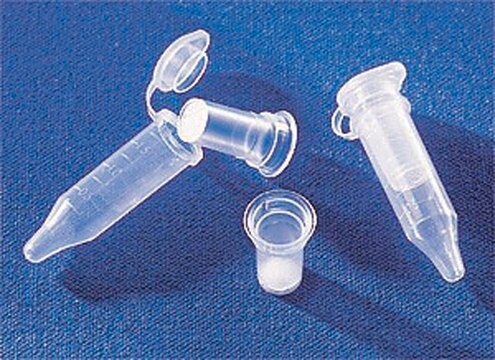GE28-9520-96
HiTrap® Con A 4B
Cytiva 28-9520-96, pack of 5 × 5 mL
About This Item
Recommended Products
ligand
concanavalin A (con A)
packaging
pack of 5 × 5 mL
manufacturer/tradename
Cytiva 28-9520-96
storage condition
(100% Isopropanol)
(20% Ethanol containing 0.1 M Acetate Buffer pH 6, 1 M NaCl, 1 mM CaCl2, 1 mM MnCl2 and 1 mM MgCl2)
parameter
42 psi
bed size
16 mm × 25 mm
bed volume
5 mL
column I.D.
16 mm
matrix
4% agarose
particle size
45-165 μm
average diameter
90 μm
cleaning
4-9
working range
4-6
storage temp.
2-8°C
Related Categories
General description
Concanavalin A (Con A) is a tetrameric metalloprotein isolated from Canavalia ensiformis (jack bean). Con A binds molecules containing α-D-mannopyranosyl, α-D-glucopyranosyl, and sterically related residues. The binding sugar requires the presence of C-3, C-4 and C-5 hydroxyl groups for reaction with Con A. Con A coupled to Sepharose™ is routinely used for separation and purification of glycoproteins, polysaccharides, and glycolipids.
Features and Benefits
- Con A Sepharose™ is concanavalin A coupled to Sepharose™ 4B.
- HiTrap® Con A 4B columns can be operated with a syringe, a peristaltic pump, or a liquid chromatography system such as AKTA design.
Storage and Stability
Analysis Note
Other Notes
Legal Information
related product
Signal Word
Warning
Hazard Statements
Precautionary Statements
Storage Class Code
3 - Flammable liquids
Choose from one of the most recent versions:
Certificates of Analysis (COA)
Sorry, we don't have COAs for this product available online at this time.
If you need assistance, please contact Customer Support.
Already Own This Product?
Find documentation for the products that you have recently purchased in the Document Library.
Articles
This page shows how to convert between flow velocity and volumetric flow rate in affinity chromatography of antibodies.
Protocols
This page shows how to purify or remove glycoproteins and polysaccharides with Con A Sepharose 4B, Lentil Lectin Sepharose 4B, Capto Lentil Lectin from Cytiva.
Column packing and preparation for Affinity Chromatography with specific groups of biomolecules.
This page covers detailed information on cleaning procedures and recommended flow for column cleaning.
Our team of scientists has experience in all areas of research including Life Science, Material Science, Chemical Synthesis, Chromatography, Analytical and many others.
Contact Technical Service


